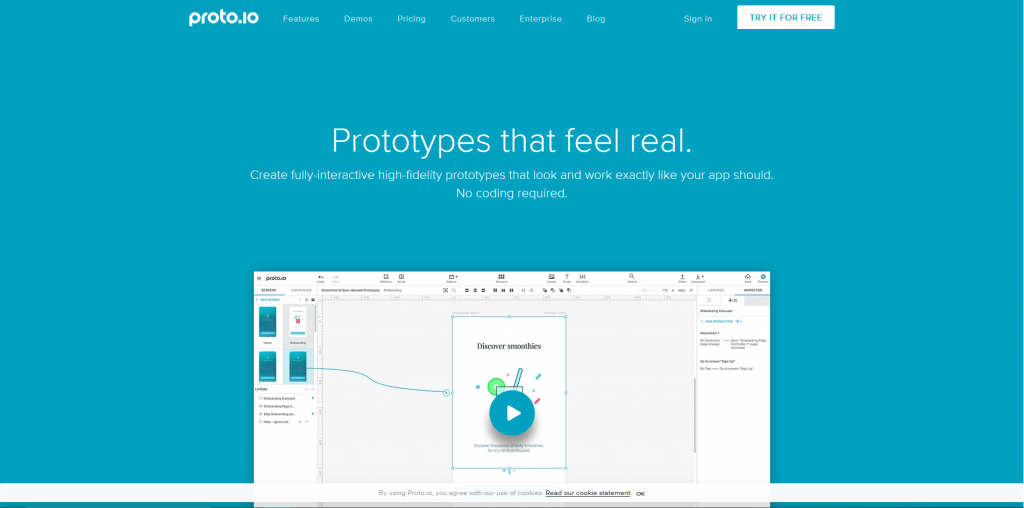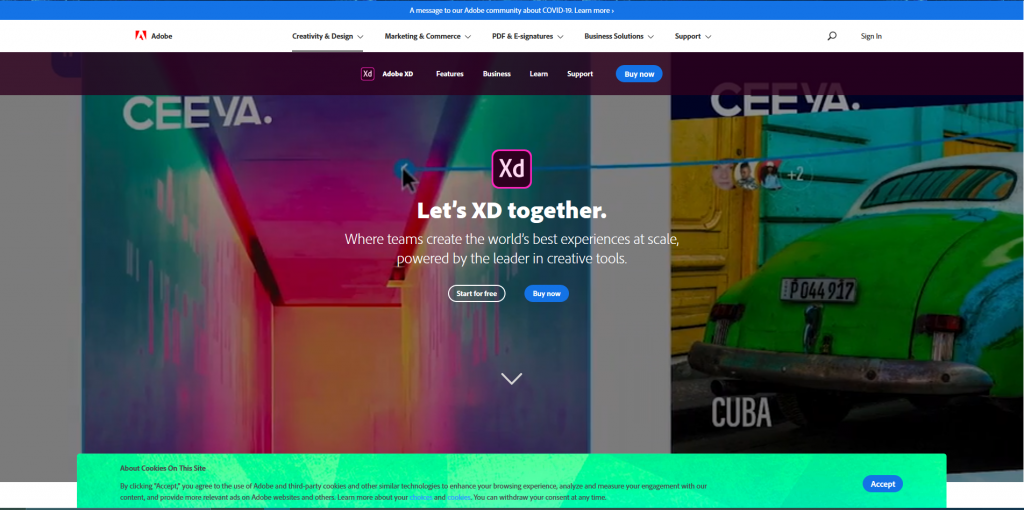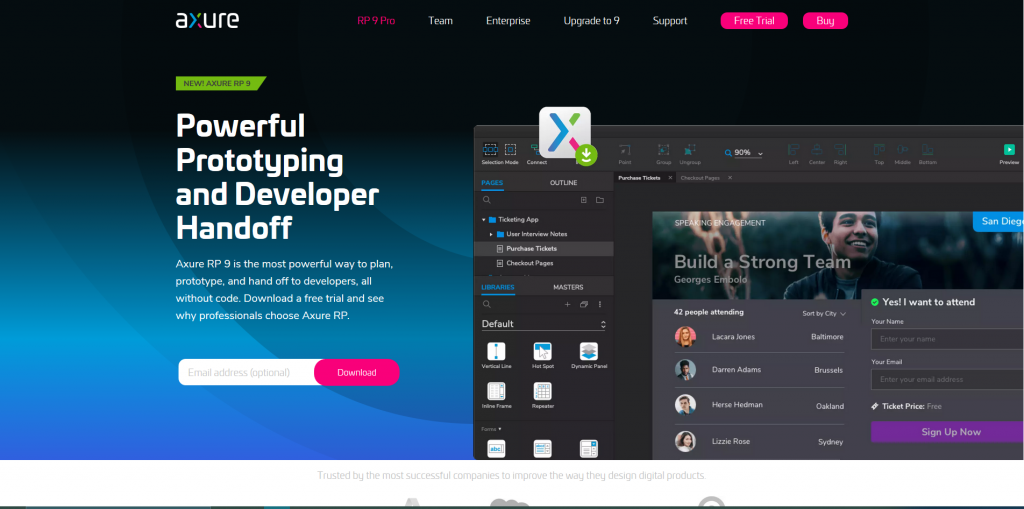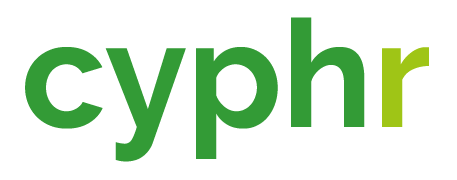Adapted from ’12 top prototyping tools’ by Carl Cahill and Levin Mejia for Creative Bloq: https://www.creativebloq.com/web-design/top-10-prototyping-tools-2016-21619216
1. Proto.io

Price: From $24/mo (free trial)
Pros:
- Record user tests
- Sharable prototypes
- Mobile app available
- Supports VR prototyping
- Add-ons available
Cons:
- Not great for offline use
Proto.io is an incredible contender for creating lifelike prototypes from rough ideas right through to fully fledged designs. The tool also provides many possibilities for your projects, including creating detailed animations and custom vector animations.
It’s certainly one of the front runners when you’re assessing tools to help create your prototypes. With Proto.io, starting a project is as simple as you want it to be. With only a rough idea sketched out, you can get cracking right away and start using predefined assets to evolve your concept quickly.
Once you’re happy with your ideas, these can then be turned into more polished and presentable wireframes for further validation and reflection. The next significant step after that enables you to tweak the design of your prototypes so they are as true to the end result as possible.
Proto.io is a web-based tool and comes with a bucketload of add-ons and features, which include the importing of Sketch and Photoshop files, VR prototyping, UI Libraries and even screen recording for user testing. This can really help if you are transitioning to and from other applications.
Ultimately, you will need to take some time to get to grips with this tool. There’s a lot that can be done with it and there are a great number of options and menu items to play with. Once you’ve learned your way around it though, it will be a hard one to put away. The prospect of creating detailed animations really does make this an excellent tool to use and the perfect way to execute your ideas in as realistic a manner as possible.
2. Adobe XD

Price: $9.99/mo | £9.98/mo
Try a free trial: US | UK
Pros:
- Add interactions with just a few clicks
- Clean UI
- Run and export prototypes for easy testing
- Create prototypes with very few restrictions
Cons:
- Animation options are limiting
Adobe XD offers the best environment for digital projects under the Adobe Creative Cloud collection of design tools. Although if you’re a keen Adobe user and new to XD, you may not find the interface very familiar to begin with but it does stack up against the other leading tools out there. It is a jump if you’ve been designing in Photoshop for a while. However, it is worth it if you are a big Adobe fan.
This tool enables you to create high-fidelity designs and prototypes with very few restrictions. It will certainly always be among the armoury for the more visual projects. It’s very design led and is very easy to use with some really neat features to make the design process more efficient and satisfying.
There are two modes to your canvas: these are Design and Prototype. Once you have created a set of interfaces and artboards, you can start to draw relationships between clickable elements and pages. You can decide between transition styles like sliding, pushing and dissolving. XD then lets you to run and export prototypes so you can test them and show them to clients.
3. Axure

Price: From $29/mo
Pros:
- Great for complex sites and ideas
- Excellent at handling dynamic data
- Conditional logic
- Able to export as HTML files
- Very functional
Cons:
- Not ideal for prototyping a high-fidelity designs
Axure has managed to build up a reputation as being one of the best wireframing tools on the market, and the perfect choice when it comes to dealing with more complex projects requiring dynamic data. With Axure, you can really focus your attention on mocking up projects that are both more technical and require more attention when it comes to structure and data.
Although it’s not necessarily the first choice for prototyping a high-fidelity design, it is nonetheless great at quickly taking the larger projects / software platforms through the first stage wireframe concepts.
A major benefit of Axure is that it handles dynamic content really well, enabling you to change and alter it according to certain user journeys or interactions. This is achieved through a combination of conditional logic and manipulating pages, content blocks or text by setting variables and parameters.
But the potential of what you can do with Axure doesn’t stop there. It’s a great option for visualising flow charts and diagrams, which is just the thing for helping you to articulate some of the more technical journeys you might come up against.
And talking of the technical aspects of a project, Axure should be top of your shopping list for tackling technical aspects of design, as well as data-led or dynamic platforms, whereby design is a mere cosmetic overhaul at the end. Function over form comes to mind.

